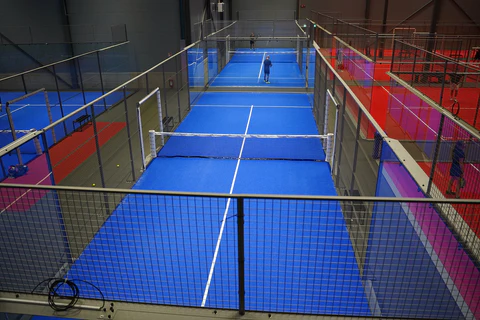

Padel and Tennis Factories An Insight into the Manufacturing World of Racket Sports
In recent years, the popularity of padel and tennis has soared globally, leading to an increase in the demand for high-quality sports equipment. As these sports are heavily reliant on their gear, it’s essential to understand the factories behind the production of padel and tennis rackets, balls, and additional accessories. This article explores how these factories operate, the technologies they employ, and the impact they have on the sports industry.
The Rise of Padel and Tennis
Padel, a sport that combines elements of tennis and squash, has exploded in popularity, especially in Spain and Latin America, while tennis has established itself as a global phenomenon for decades. With more people engaging in these sports, the need for specialized equipment has increased. Consequently, manufacturers have ramped up production, ensuring that players of all levels can access high-quality gear.
Manufacturing Processes
At the core of padel and tennis factories is the manufacturing process that transforms raw materials into finished products. For rackets, manufacturers typically use materials such as carbon fiber, fiberglass, and foam. The choice of material plays a crucial role in the racket’s performance, durability, and feel. For instance, carbon fiber is favored for its lightweight and strong characteristics, which appeal to both professionals and amateurs.
The production process begins with the design phase, where expert engineers and players collaborate to create prototypes. Once a design is finalized, factories utilize advanced technology to cut and mold these materials into the desired shapes. The process often involves computer-aided design (CAD) software and computer numerically controlled (CNC) machines, allowing for precision and consistency.
After the initial shaping, the frames are typically layered with resin and left to cure, ensuring they have the desired strength and flexibility. The quality control process is rigorous, as manufacturers must ensure that each racket meets established performance standards. This involves testing for weight, balance, and durability, ensuring that they can withstand the rigorous demands of competitive play.
Padel and Tennis Balls

Alongside rackets, balls are a critical component of both sports. The production of tennis and padel balls involves a different set of processes, focusing on the combination of rubber for the core and felt for the outer layer. The manufacturing of balls is streamlined and often automated, with factories producing thousands of balls every day.
Quality assurance is critical in the production of balls, as players require consistency in bounce, speed, and durability. Many factories use automated machinery to perform tests that measure the balls' pressure and bounce height, ensuring that each ball adheres to the regulations set by sports governing bodies.
Economic Impact
The factories dedicated to manufacturing padel and tennis equipment play a significant role in their respective economies. As demand grows, so does the workforce in these factories. Many of these facilities are located in countries with a robust sporting goods sector, such as China, Spain, and the USA. This not only creates jobs but also fosters domestic and international trade.
Moreover, innovations and advancements in materials and technology can lead to the development of superior products. For example, the introduction of eco-friendly materials or innovative designs may attract environmentally conscious consumers and elevate the factory's reputation.
Conclusion
As padel and tennis continue to grow in popularity, the factories that produce the equipment essential for these sports are becoming increasingly significant. The intricate processes involved in manufacturing rackets and balls highlight the delicate balance of art and science required to create high-quality sporting goods. The involvement of modern technology ensures that players can trust the equipment they use, enhancing their performance and enjoying the game even more.
In summary, the journey of padel and tennis equipment from factory floors to the courts underscores the importance of manufacturing in the sports industry. By understanding this behind-the-scenes aspect, fans and players alike can appreciate not only the sports they love but also the craftsmanship and innovation that make it all possible.
High-Performance Industrial Flooring Solutions China Paddle Tennis Court for Sale
High-Performance Industrial Flooring Solutions Durable & Cost-Effective
Homogeneous Transparent Floor – Durable & Stylish Rubber Floor Solutions
Premium Homogeneous Transparent Floor for Durable & Stylish Spaces Rubber Floor Solutions
Premium Sports Floor Solutions Durable PVC Sports Floor & Rubber Floor for Gyms
Durable Rubber Composite Floor Premium Rubber Floor & Mats Solutions